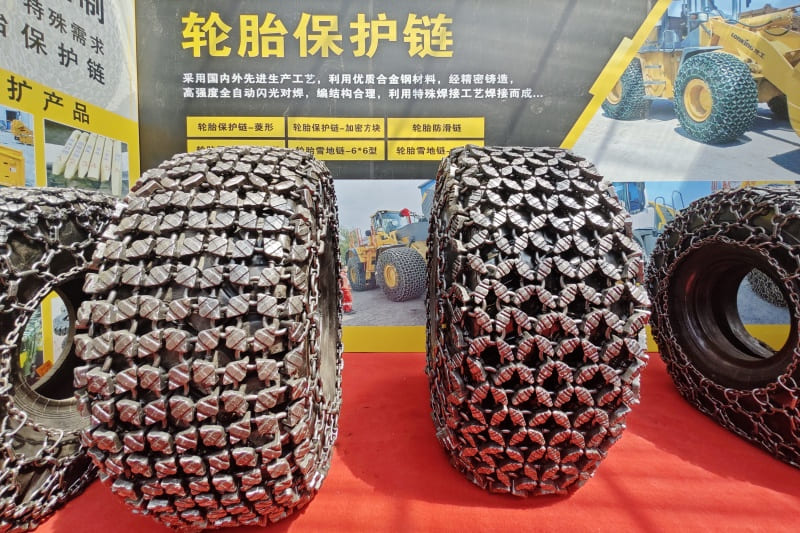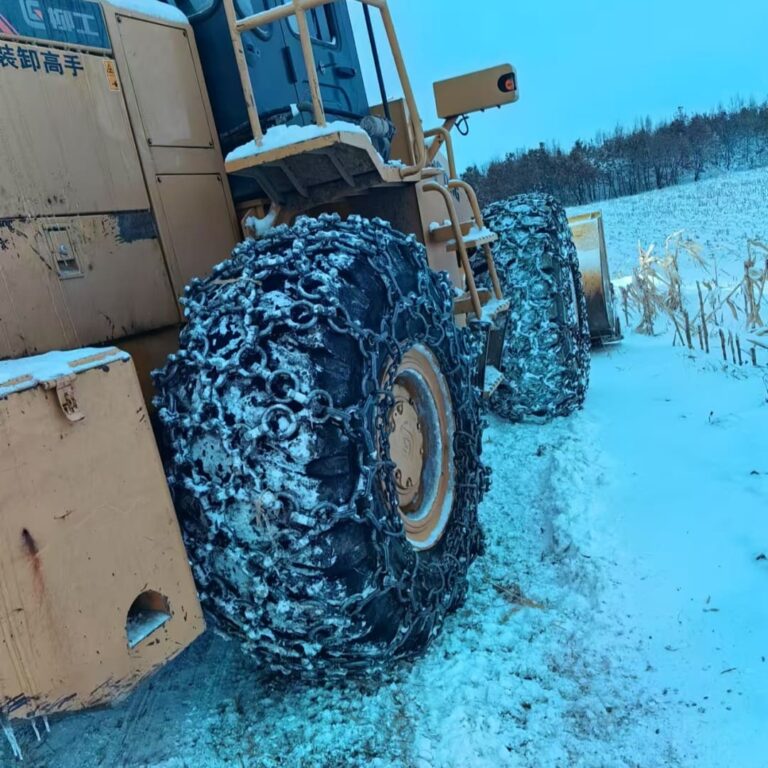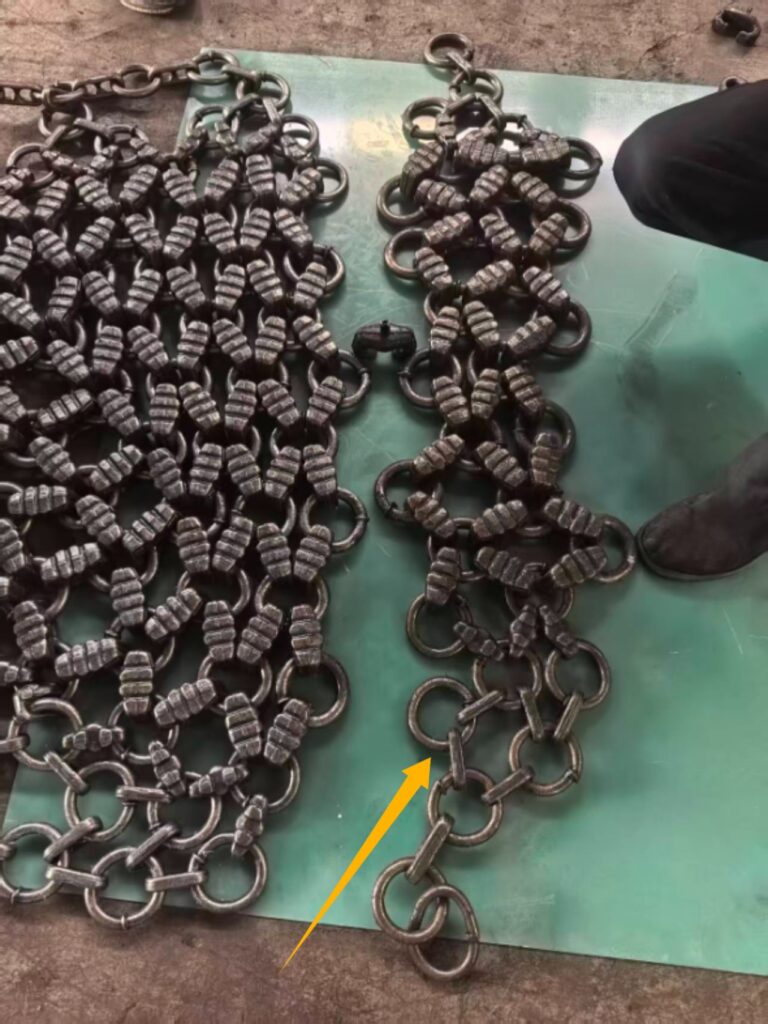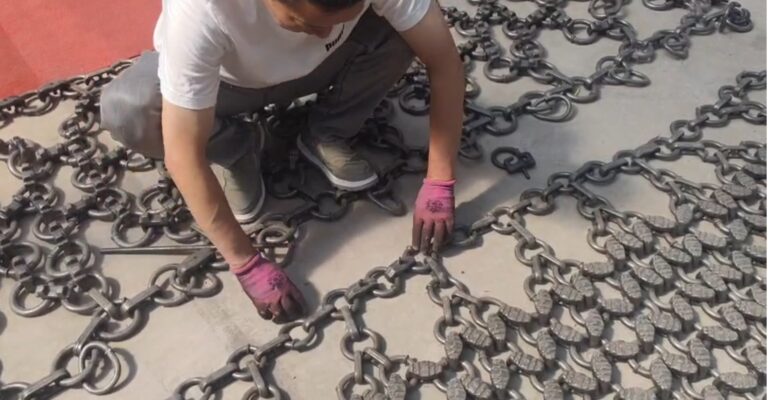What is a Tyre Protection Chain?
A tire protection chain is a specialized protective device engineered to enhance the durability of tires in harsh environments. Typically crafted from high-strength, high-hardness alloy steel, it employs specialized weaving or welding techniques to interlink chain links into a mesh structure that envelops both the tread and sidewall of the tire.
Its primary function is to serve as a physical barrier, shielding tires from damage caused by sharp rocks, glass shards, metal debris, or abrasive road surfaces in complex terrains such as mining sites, construction zones, snowy landscapes, or rocky pathways. By preventing tread punctures, cuts, and sidewall tears, it significantly extends tire lifespan and reduces downtime costs stemming from tire failures.
The distinct advantage of tire protection chains lies in their dynamic adaptability and integrated functionality. Unlike rigid casings, they feature articulated or elastically tensioned joints between chain links, enabling synchronized expansion, contraction, and deflection with tire deformation during rolling motion. This ensures consistent contact with the tire’s surface without inducing abnormal wear from excessive restraint, while maintaining effective ground engagement of the tread pattern to preserve vehicle handling.
Additionally, strategically engineered debris-ejection channels or hydro-drainage openings within the mesh structure automatically dislodge embedded stones, mud, or snow during rotation, preventing tread clogging and preserving traction—thus balancing protective and functional demands.
The value of tire protection chains extends beyond mere protection, encompassing comprehensive operational and economic benefits. In high-stress applications involving heavy machinery, agricultural vehicles, or off-road transport, they reduce tire replacement rates by 30%–60% by mitigating unexpected damage, while minimizing maintenance delays caused by blowouts or leaks to boost productivity.
Their shock-absorbing capabilities also shield rims from direct impacts, indirectly prolonging rim service life. Environmentally, they promote sustainability by extending tire lifecycles and curbing scrap tire generation. Consequently, tire protection chains have become indispensable in high-risk, high-load work scenarios, offering a critical blend of reliability and efficiency.






